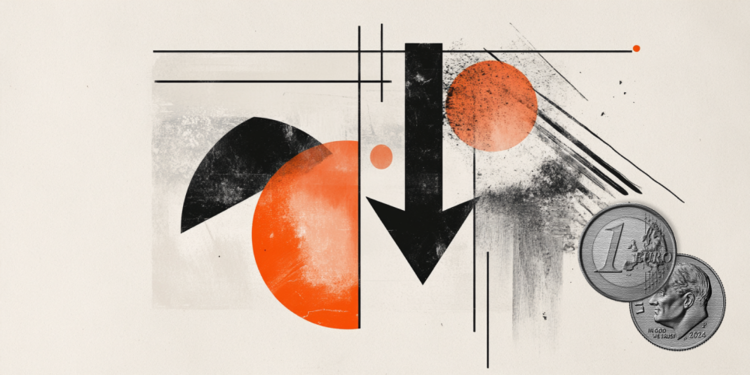At least one in every 100 children is diagnosed with autism spectrum disorder (ASD), according to data from the World Health Organization (WHO).
Although the salert signals can lead to diagnosis in early childhood, it is possible that neurodivergence is only identified in adulthood — as happened with actress Letícia Sabatella, at 52 years old.
Often, the difficulty in diagnosing is associated with the fact that the spectrum encompasses “degrees that can be mild and with total independence, presenting slight adaptation difficulties, up to levels of total dependence for daily activities throughout life”, according to with information from the Ministry of Health.
“If a person has a level one autism spectrum disorder, as is often the case with those who discover ASD in adulthood, normally what makes the diagnosis difficult is that the intensity of the symptoms is very mild”, explains neurologist Alexandre Ribeiro. Fernandes. “This ends up confusing even the person themselves, whether it is a disorder, something that escapes common sense and is a symptom or whether it is an individual characteristic.”
Furthermore, the doctor, who coordinates the Scientific Department of Child Neurology at ABN (Brazilian Academy of Neurology), points out the non-specificity of the symptoms as an obstacle to diagnosis.
In the United States, according to data from the Centers for Disease Control and Prevention (CDC) released in 2022, the estimate is that 5,437,988 (2.21%) adults have ASD.
In Brazil, data on ASD is scarce. The Brazilian Institute of Geography and Statistics (IBGE) included a question about autism in the 2022 Demographic Census. However, to date, the results have not been released.
Interference at different levels
Basically, the disorder is characterized by the atypical development of the individual’s neurological functions. These changes can interfere, at different levels, with the autistic person’s ability to communicate, language and social behavior.
It is also common for patients to have a restricted range of interests and perform activities repetitively, but these vary from person to person.
The WHO also indicates that it is common for individuals on the spectrum to present other concomitant conditions, including:
- epilepsy,
- depression,
- anxiety
- and attention deficit hyperactivity disorder (ADHD).
The prevalence of the disorder is higher in males, being almost four times more common in boys than in girls, according to estimates from the Autism and Developmental Disabilities Monitoring Network of the Centers for Disease Control and Prevention (CDC) in the United States.
Causes
To date, science does not define a cause for the development of autism spectrum disorder, but evidence points to an interaction between genetic and environmental factors.
This means that some factors can contribute to the development of ASD in people who are genetically disposed, such as
- exposure to chemical agents,
- vitamin D and folic acid deficiency,
- use of substances (such as valproic acid) during pregnancy,
- prematurity (with gestational age below 35 weeks),
- low birth weight (less than 2.5 kg),
- multiple pregnancies,
- maternal infection during pregnancy
- and advanced parental age.
Regarding the impression that there are currently more autistic people, neuropediatrician Rudimar Riesgo, professor at the Federal University of Rio Grande do Sul, explains that there are studies that point to an increase in the prevalence of the disorder, that is, in the number of cases found in a population in a certain period of time.
According to the doctor, the rapid circulation of information, especially with the emergence of the internet, may be responsible for the event. In addition, Riesgo also cites changes to diagnostic criteria made by the American Psychiatric Association. The most recent diagnostic manual is the DSM-5, released in 2013.
But these should not be the only causes for the increase in the prevalence of the disorder, says the expert. “There is something else that we still don’t know how to explain, most likely some environmental factor that could account for at least part of this increase.”
The neuropediatrician emphasizes, however, that the dissemination of information cannot be an incentive for people to self-diagnose. “It’s important to have a report written by a doctor, someone who takes responsibility for that,” he explains.
But how is the diagnosis made?
O diagnosis of ASD is done clinically, based on observations, interviews and application of specific instruments, with no laboratory test that identifies it.
A curiosity described by Riesgo is that, “in girls, it is more difficult to make the diagnosis”. “That’s why late diagnosis is more common in women, because girls are able, even without knowing it, to mask their symptoms.”
Although there is no cure for the disorder, both experts describe the importance of diagnosis.
With the report, the doctor is able to assemble a personalized interdisciplinary team to monitor the needs of each patient. If the child cannot speak, for example, they will be referred to a speech therapist.
“Severe cases, without intensive intervention, can lead some children to not acquire speech. Those who did not have an early diagnosis or who have a very serious condition, if they do not receive help early, may not have independence in adulthood”, explains Riesgo.
In milder cases, the diagnosis also interferes with the individual’s quality of life.
“You stop thinking you’re strange, stop thinking you’re weird, and discover that there’s a reason for it, it brings great comfort. The person starts to feel supported for going through that”, points out Fernandes.
Source: CNN Brasil
I am an experienced journalist and writer with a career in the news industry. My focus is on covering Top News stories for World Stock Market, where I provide comprehensive analysis and commentary on markets around the world. I have expertise in writing both long-form articles and shorter pieces that deliver timely, relevant updates to readers.







